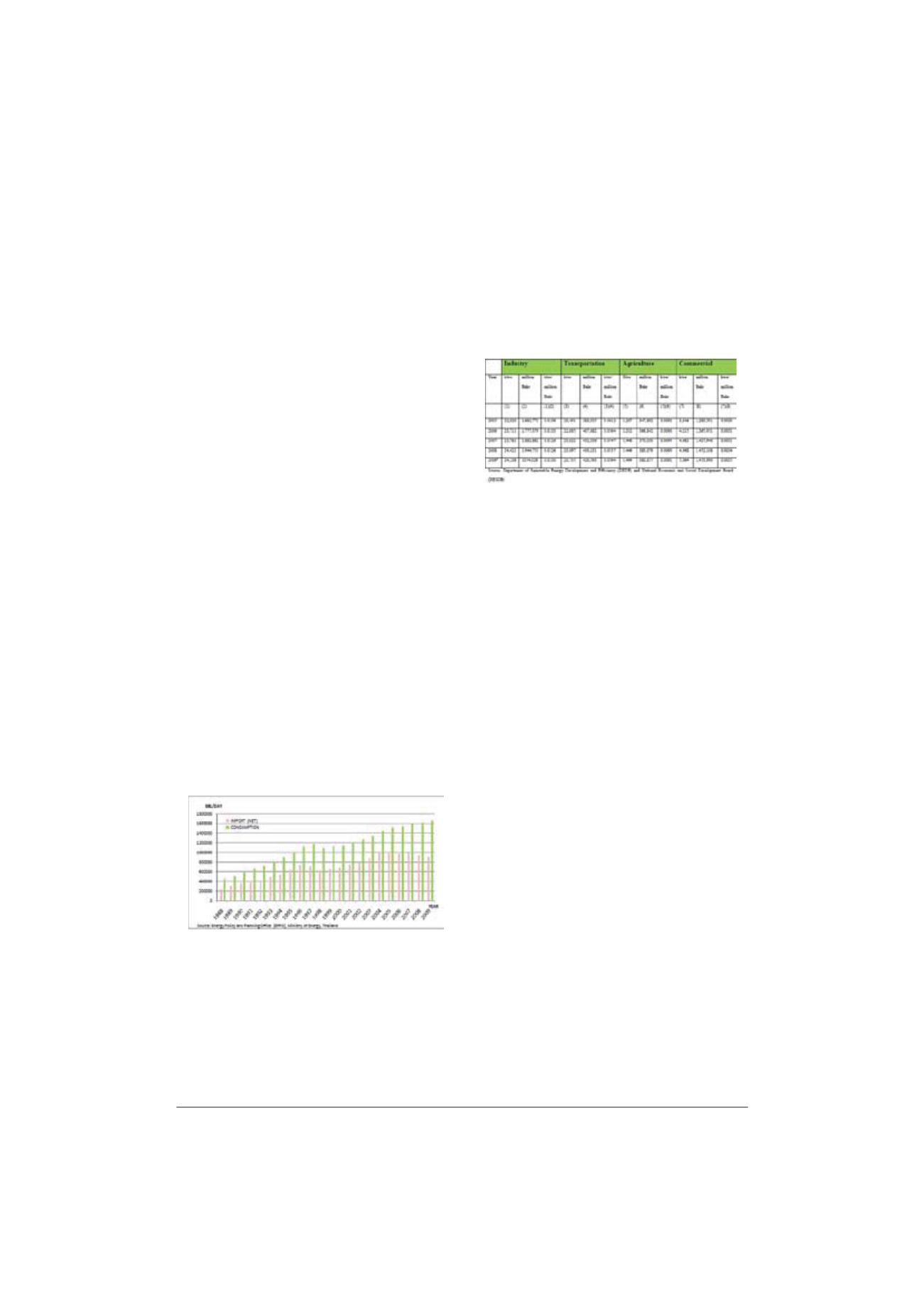
2011 International Conference on Alternative Energy in Developing Countries and Emerging Economies
- 195 -
contract to hedge against fluctuation of exchange
rate, thereby smoothing profit sharing or dividend
being transferred back to the investors in the future.
In case the prices of energy or electricity output are
forecast to be volatile due to unstable economic
situation, political turmoil, or ever-changing policy, a
long-term offtake agreement with government
specifying prices, tenure, responsible party, and
delivery arrangement should be sought after before
undertaking a project.
One-stop financing service for future expansion.
For example, a typical commercial bank can provide
various services starting from commercial loan,
guarantee, financial derivatives instruments, deal
sourcing for potential merger and acquisition, merger
and acquisition services, initial public offering, and
so on. From a startup to an established listed
company, FIs play a crucial role in helping
companies to achieve their operational goals –
growth and profitability.
I I . E
N E R G Y S I T U A T I O N
,
P O L I C I E S
A N D R E N E W A B L E
E
N E R G Y I N
T
H A I L A N D
Thailand’s energy situation
Thailand is a net energy import country.
According to the Energy Policy and Planning Office
(EPPO), Ministry of Energy of Thailand, primary
commercial energy importation accounts for about
60.8 percent of total primary commercial energy
demand during 1988 - 2009 (see Fig. 1. Annual
energy import and consumption). The peak at 68
percent was in 2004. In 2009, Thailand’s energy
consumption stood at 1.66 million barrel per day.
However, the country reduced its energy import to 54
percent of total consumption in 2009, partly due to
economic recession, lower oil price, and increase in
renewable energy consumption (mainly biofuels).
Fig. 1. Annual energy import and consumption.
Increase in energy price or scarcity of oil resource
would adversely affect the country’s sovereignty and
development. Although Thailand is an agriculture led
economy (employed almost 40 percent of labor
force), large proportion of GDP, 78 percent, is from
manufacturing and services sectors [6]. In terms of
energy consumption, industry and transportation
sectors are major energy consumers (see Table 1:
final energy consumption by the economic sectors
per GDP by the economic sectors).
TABLE I
F
INAL ENERGY CONSUMPTION PER GDP BY ECONOMIC SECTORS
According to a forecast of future energy
consumption, importation, economic growth,
urbanization, population growth, and climate change
impact, Thai policy makers have researched a
solution to sustain its long-term development.
Srichattra Chaivongvilan and Deepak Sharma, energy
policy analysts at Energy Planning and Policy
Program at University of Technology, Sydney
analyzed three scenarios, business as usual (BAU),
nuclear power (NP), and renewable energy (RE) for
Thailand’s future energy situation. Chaivongvilan
and Sharma elaborated each scenario as the
following:
Business-as-usual scenario (BAU)
The BAU scenario represents a situation where
there is no appreciable change in existing energy
policies. It is assumed that, over the next five
decades or so, energy consumption trends in
industrial, ACM, transport, commercial and
residential sectors will follow their forecasted
course and that the existing and anticipated
government policies related to the energy sector
are unlikely to change perceptibly.
Nuclear power scenario (NP)
Currently, Thailand has no nuclear power
generation plant. However, there is a plan to
embark on a nuclear power program in the
foreseeable future. The main purpose of
considering nuclear power is to ascertain the
likely long-term impacts of nuclear on energy
diversification and other substantive goals set by
the government of Thailand. It should be noted
that the public acceptance of this scenario is
expected to be low.
Renewable energy scenario (RE)
In this study, commercial and non-commercial
renewable energy is considered. This includes
hydro, solar, wind, geothermal, and biomass


